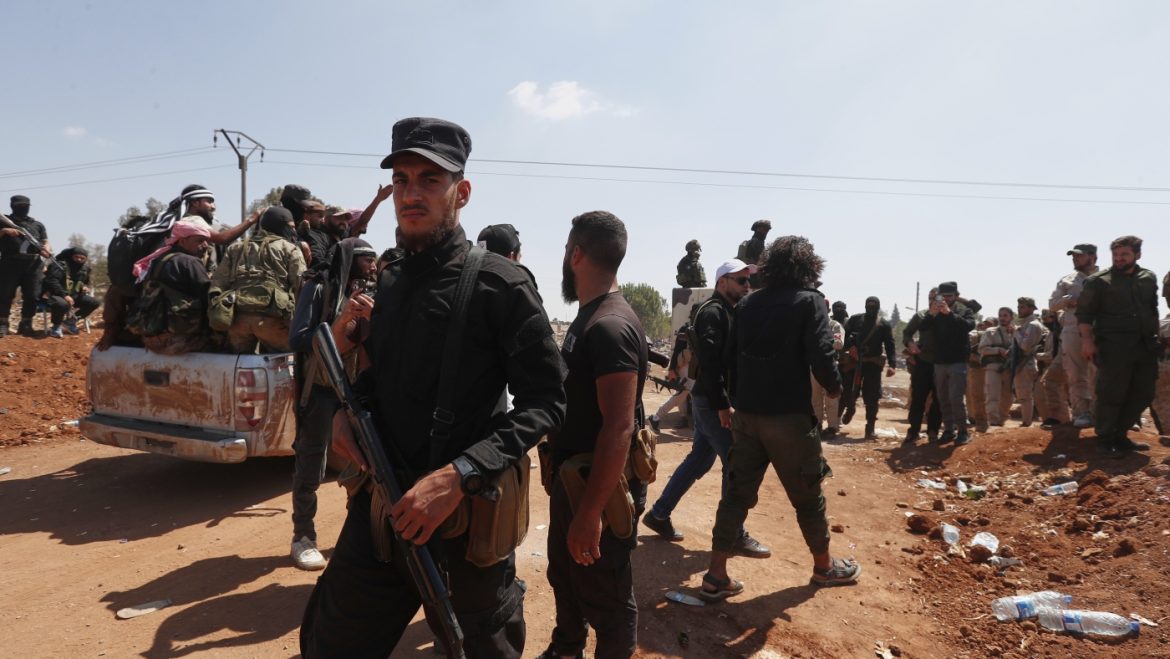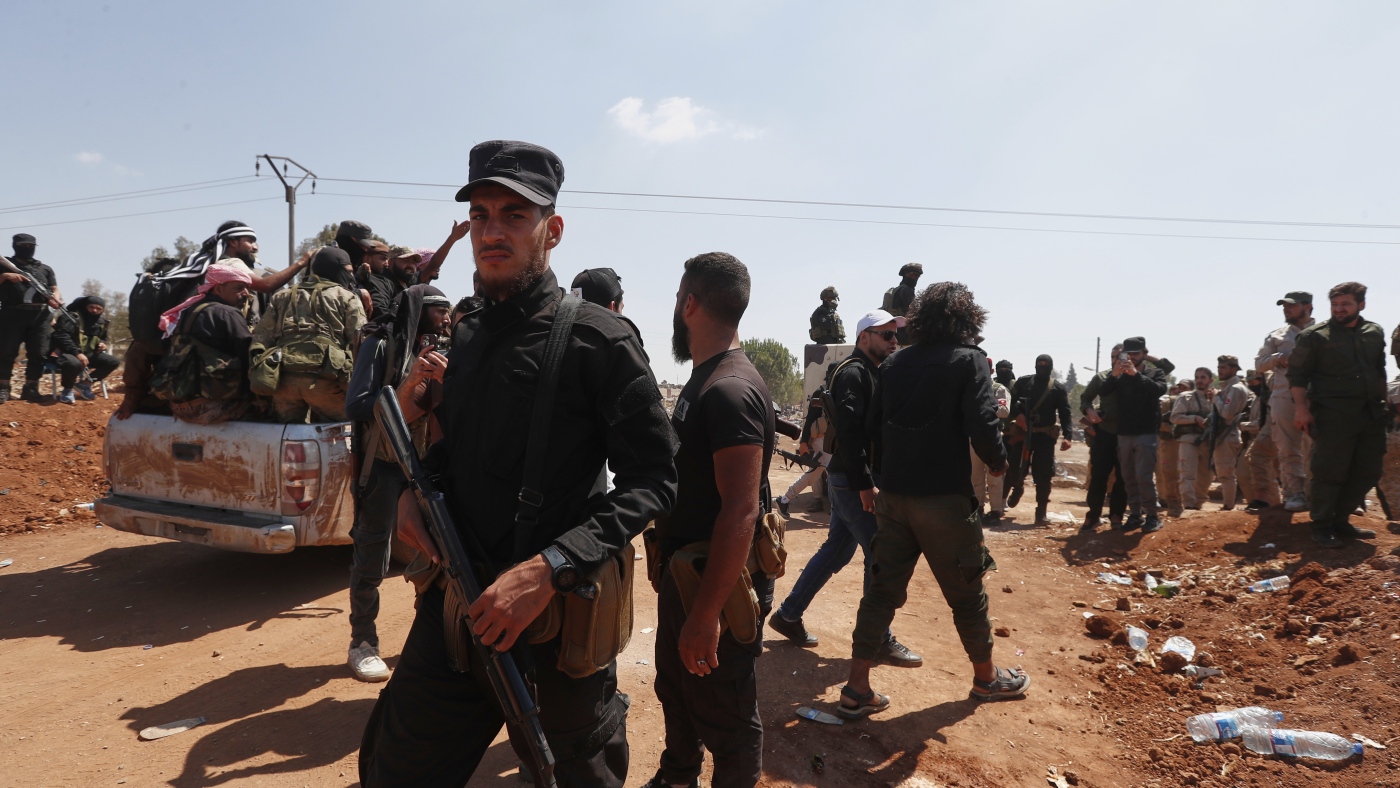The Fragile Peace in Sweida: A Delicate Balance in Syria’s Turbulent Landscape
Introduction: A Moment of Cautious Optimism
The recent withdrawal of armed Bedouin clans from Sweida, a city in southern Syria known for its Druze religious minority, has brought a moment of cautious optimism to a region that has seen its share of turmoil. This development, facilitated by a U.S.-brokered ceasefire, marks a tentative step towards de-escalation after a week of deadly clashes that claimed hundreds of lives. However, the underlying tensions and the fragile state of Syria remain a cause for significant concern. The conflict in Sweida underscores the complex interplay of sectarianism, tribalism, and the lingering effects of a protracted civil war, threatening to further destabilize a region already teetering on the edge.
The Spark and the Flame: Unraveling the Sweida Conflict
To fully grasp the significance of the Bedouin withdrawal, it is essential to delve into the context of the conflict itself. Sweida, located in southern Syria, has maintained a degree of autonomy throughout the Syrian civil war, largely due to its Druze majority and the community’s efforts to avoid direct involvement in the broader conflict. However, this relative peace has been increasingly challenged by economic hardship, government neglect, and the rise of various armed groups operating in the region.
The immediate cause of the recent clashes appears to be a confluence of factors, including long-standing grievances between the Druze community and neighboring Bedouin tribes, disputes over resources, and accusations of criminal activity. Some reports suggest that the fighting was triggered by tensions related to smuggling routes and disputes over land and water rights. The involvement of armed militias on both sides quickly escalated the conflict, transforming localized disputes into a broader confrontation with devastating consequences.
The sectarian dimension, while perhaps not the primary driver, cannot be ignored. The Druze are a distinct religious minority in Syria, while the Bedouin tribes in the region are predominantly Sunni Muslim. This religious difference likely exacerbated existing tensions and contributed to the intensity of the conflict. The sectarian undertones of the conflict highlight the delicate balance of power and the potential for further fragmentation in a country already divided along religious and ethnic lines.
A US-Brokered Ceasefire: A Temporary Patch or a Lasting Solution?
The announcement of a U.S.-brokered ceasefire and the subsequent withdrawal of Bedouin forces offers a glimmer of hope for a return to stability in Sweida. However, the effectiveness and long-term viability of this agreement remain uncertain. While the ceasefire may halt the immediate violence, it does not address the root causes of the conflict. The underlying grievances, economic disparities, and the presence of armed groups continue to pose a threat to the fragile peace.
The role of the United States in brokering this ceasefire also warrants further examination. While the U.S. has long been involved in the Syrian conflict, its influence in southern Syria has been somewhat limited. This intervention suggests a renewed focus on de-escalation and stabilization in the region, but the extent of U.S. commitment and its ability to sustain the ceasefire remain to be seen. Moreover, the involvement of external actors like the U.S. can be viewed with suspicion by some within Syria, potentially undermining the legitimacy and effectiveness of the agreement.
The ceasefire, while a necessary first step, is not a comprehensive solution. It is a temporary patch that addresses the symptoms rather than the underlying causes of the conflict. For the ceasefire to evolve into a lasting peace, it must be accompanied by a broader effort to address the economic, social, and political grievances that fueled the conflict in the first place. This includes investing in economic development, creating job opportunities, and improving access to education and healthcare. It also requires a commitment to dialogue and reconciliation between the Druze and Bedouin communities, as well as a concerted effort to disarm and demobilize the various armed groups operating in the region.
Humanitarian Crisis and the Road to Recovery
The weeklong clashes in Sweida have resulted in a significant humanitarian crisis, with hundreds killed and many more injured. The fighting has also disrupted essential services, including access to water, food, and medical care. The arrival of humanitarian aid convoys is a welcome development, but the scale of the needs is immense. Rebuilding damaged infrastructure, providing medical assistance to the injured, and addressing the psychological trauma of the conflict will require a sustained and coordinated effort.
Beyond the immediate humanitarian needs, there is a pressing need to address the underlying economic and social factors that contributed to the conflict. Investing in economic development, creating job opportunities, and improving access to education and healthcare are essential steps towards building a more stable and prosperous future for Sweida and the surrounding region. The international community, including the United States, has a role to play in supporting these efforts, but ultimately, the future of Syria rests in the hands of the Syrian people themselves.
The humanitarian crisis in Sweida is not just a consequence of the recent conflict but also a reflection of the broader challenges facing Syria. The country’s infrastructure has been severely damaged by years of war, and the economic situation has deteriorated significantly. The Syrian government, along with international aid organizations, must prioritize the reconstruction of essential services and the provision of humanitarian assistance to the affected populations. This includes not only immediate relief efforts but also long-term development projects that can help rebuild the region and create a more stable and prosperous future for its inhabitants.
The Wider Implications for Syria
The conflict in Sweida and the subsequent Bedouin withdrawal have broader implications for the stability of Syria as a whole. The Syrian civil war has left the country fragmented and vulnerable to internal conflicts. The rise of armed groups, the proliferation of weapons, and the weakening of state institutions have created a breeding ground for local disputes to escalate into broader confrontations.
The Sweida conflict serves as a stark reminder of the fragility of the Syrian state and the challenges of achieving lasting peace. The involvement of sectarian and tribal elements further complicates the situation, making it difficult to find common ground and build trust between different communities. The Syrian government’s response to the Sweida conflict will also be crucial in determining the future of the country. A heavy-handed approach could further alienate the Druze community and other minority groups, while a failure to address the underlying grievances could embolden other armed groups and lead to further instability.
A more inclusive and conciliatory approach, focused on dialogue and reconciliation, is essential to building a more stable and unified Syria. This includes not only addressing the immediate grievances of the Druze and Bedouin communities but also fostering a broader sense of national unity and shared purpose. The Syrian government must work to rebuild trust with minority groups and ensure that their concerns are taken into account in the broader political process. This includes providing security guarantees, ensuring equal access to resources and services, and promoting inclusive governance that reflects the diversity of the Syrian people.
A Cautious Calm: Looking Ahead
The withdrawal of Bedouin forces from Sweida represents a moment of cautious calm in a region scarred by conflict. While the U.S.-brokered ceasefire offers a chance to de-escalate tensions, the underlying challenges remain. The long-term stability of Sweida and the broader Syrian context will depend on addressing the root causes of the conflict, providing humanitarian assistance, and fostering dialogue and reconciliation between different communities. The international community, including the United States, has a role to play in supporting these efforts, but ultimately, the future of Syria rests in the hands of the Syrian people themselves.
The cautious calm in Sweida is a fragile one, and the road ahead is fraught with challenges. The recent conflict has exposed the deep-seated tensions and grievances that continue to plague the region, and addressing these issues will require a sustained and concerted effort. The international community must remain engaged and committed to supporting the people of Sweida and Syria as they work towards a more stable and prosperous future. This includes providing humanitarian assistance, supporting economic development, and promoting dialogue and reconciliation between different communities.
Echoes of the Future: Will This Peace Hold?
The silence in Sweida today is not necessarily the sound of lasting peace. It’s more like the held breath before the next storm. The withdrawal is a tactical retreat, a pause in the fighting, not a resolution of the deep-seated issues that fueled the conflict. The echoes of gunfire may have faded, but the whispers of discontent, the cries for justice, and the seeds of future conflict still linger in the air. Whether this fragile peace holds depends not just on the absence of violence but on the presence of genuine reconciliation, sustained humanitarian aid, and a commitment to addressing the grievances that brought Sweida to its knees.
The future of Sweida and Syria as a whole hangs in the balance. The recent conflict has exposed the deep-seated tensions and grievances that continue to plague the region, and addressing these issues will require a sustained and concerted effort. The international community must remain engaged and committed to supporting the people of Sweida and Syria as they work towards a more stable and prosperous future. This includes providing humanitarian assistance, supporting economic development, and promoting dialogue and reconciliation between different communities.
Only through a genuine commitment to peace, justice, and inclusivity can Syria hope to emerge from the ashes of war and build a more prosperous and stable future for all its citizens. The echoes of the future will carry a song of hope, not a lament of war, only if the people of Syria and the international community work together to address the root causes of the conflict and build a more just and equitable society. The road ahead is long and fraught with challenges, but the people of Sweida and Syria deserve a future of peace and prosperity, and it is our collective responsibility to support them in their journey towards that goal.


